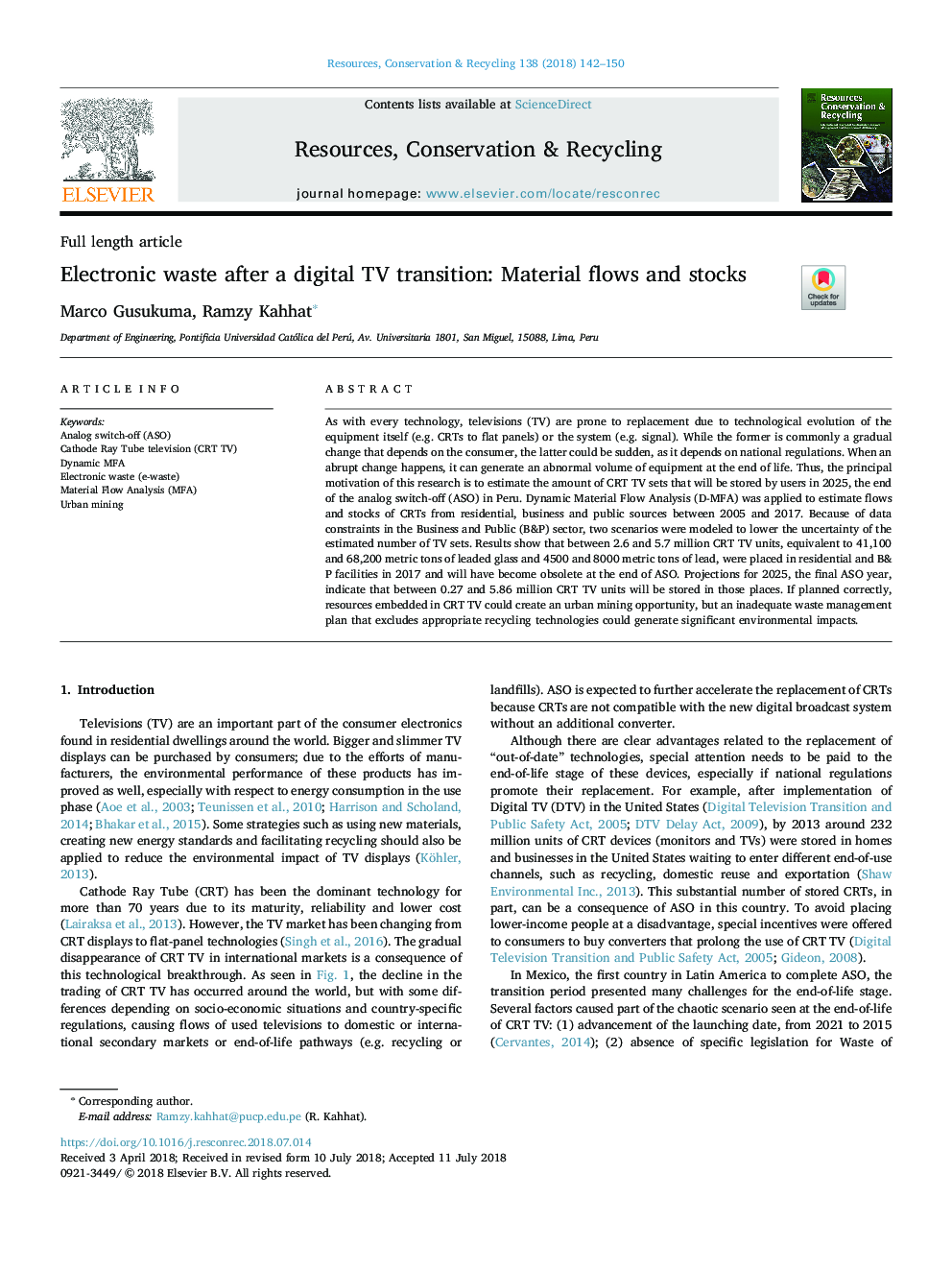| کد مقاله | کد نشریه | سال انتشار | مقاله انگلیسی | نسخه تمام متن |
|---|---|---|---|---|
| 7493813 | 1485654 | 2018 | 9 صفحه PDF | دانلود رایگان |
عنوان انگلیسی مقاله ISI
Electronic waste after a digital TV transition: Material flows and stocks
ترجمه فارسی عنوان
زباله های الکترونیکی پس از انتقال تلویزیون دیجیتال: جریان مواد و سهام
دانلود مقاله + سفارش ترجمه
دانلود مقاله ISI انگلیسی
رایگان برای ایرانیان
کلمات کلیدی
موضوعات مرتبط
مهندسی و علوم پایه
مهندسی انرژی
انرژی های تجدید پذیر، توسعه پایدار و محیط زیست
چکیده انگلیسی
As with every technology, televisions (TV) are prone to replacement due to technological evolution of the equipment itself (e.g. CRTs to flat panels) or the system (e.g. signal). While the former is commonly a gradual change that depends on the consumer, the latter could be sudden, as it depends on national regulations. When an abrupt change happens, it can generate an abnormal volume of equipment at the end of life. Thus, the principal motivation of this research is to estimate the amount of CRT TV sets that will be stored by users in 2025, the end of the analog switch-off (ASO) in Peru. Dynamic Material Flow Analysis (D-MFA) was applied to estimate flows and stocks of CRTs from residential, business and public sources between 2005 and 2017. Because of data constraints in the Business and Public (B&P) sector, two scenarios were modeled to lower the uncertainty of the estimated number of TV sets. Results show that between 2.6 and 5.7 million CRT TV units, equivalent to 41,100 and 68,200 metric tons of leaded glass and 4500 and 8000 metric tons of lead, were placed in residential and B&P facilities in 2017 and will have become obsolete at the end of ASO. Projections for 2025, the final ASO year, indicate that between 0.27 and 5.86 million CRT TV units will be stored in those places. If planned correctly, resources embedded in CRT TV could create an urban mining opportunity, but an inadequate waste management plan that excludes appropriate recycling technologies could generate significant environmental impacts.
ناشر
Database: Elsevier - ScienceDirect (ساینس دایرکت)
Journal: Resources, Conservation and Recycling - Volume 138, November 2018, Pages 142-150
Journal: Resources, Conservation and Recycling - Volume 138, November 2018, Pages 142-150
نویسندگان
Marco Gusukuma, Ramzy Kahhat,
